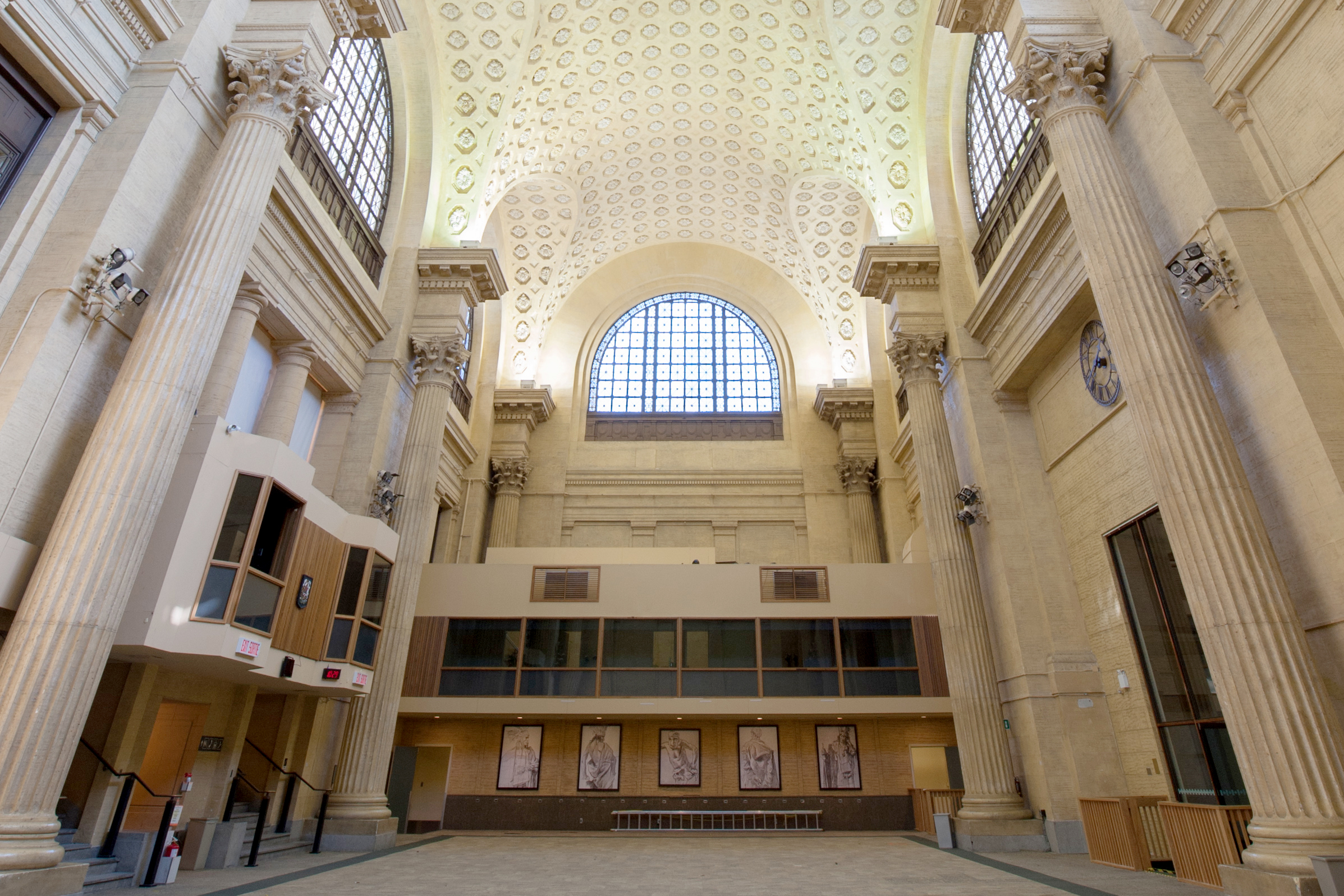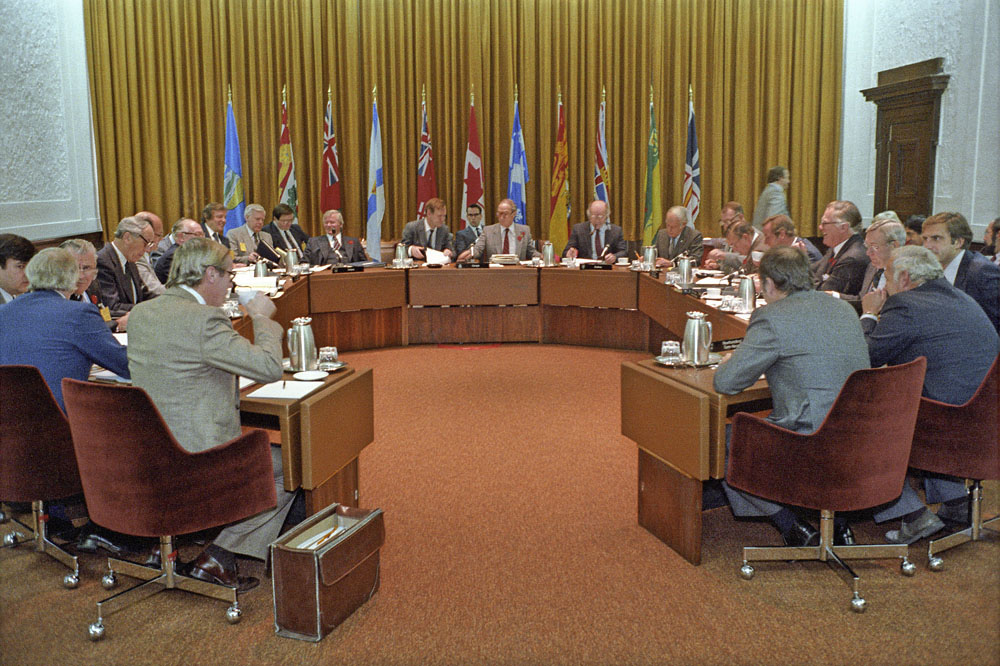How the Senate of Canada's temporary home shaped the country’s future

This article is part of a series about the Senate of Canada’s move to its temporary home in the former Government Conference Centre. The Senate relocated to the former train station, built in 1912, while Parliament’s Centre Block — the Senate’s permanent home — is rehabilitated.
The Senate is expected to occupy its temporary location for at least 10 years.
It’s fitting that the Senate of Canada’s temporary home is in a building that already has a 50-year tradition as a meeting place for important discussions about the country’s future.
Senator Serge Joyal, a federal cabinet minister when the centre was used to hold constitutional conferences in 1981, said it’s exciting that the Senate is becoming part of the building’s rich history.
“Senators will be making history in a building that has been the backdrop to so many conferences and meetings over the years. Many of those meetings have helped shape the Canada of today.”
Here are some highlights from the Senate of Canada Building’s history:
1967: Visitors centre during Canada’s Centennial
The lack of public washrooms near Parliament Hill for the thousands of Canadians expected to come to Ottawa to celebrate the country’s 100th birthday helped the former train station — decommissioned the previous year — dodge the wrecking ball.
The plan had been to tear down the then-50-year-old building to create visitors parking, but there was strong public opposition and the building was converted into a visitors centre instead.
1969: Constitutional Conference
In 1969, the renamed Government Conference Centre hosted constitutional talks, a role it would reprise over the next 25 years. Then-prime minister Pierre Elliott Trudeau and Canada’s 10 provincial premiers met to talk about distribution of powers, financial issues and regional disparities.
1973: Commonwealth Heads of Government Meeting
Canada hosted government leaders from 32 Commonwealth nations for a nine-day summit that led to a statement condemning nuclear weapons tests. Leaders also discussed pressing world issues, including the Vietnam War, the General Agreement on Tariffs and Trade, and relations between the United States and its Cold-War adversaries, the Soviet Union and China.
1981: Federal-Provincial Conference of First Ministers on the Constitution
In 1982, Canada’s Constitution came home. Canada had been created by an act of the United Kingdom’s Parliament in 1867; for many years since 1926 there was a movement to have a made-in-Canada constitution, but many of those talks failed until 1980, following the Quebec Referendum on separation. Talks thereafter resumed, which finally led to the Constitution’s patriation following lengthy negotiations that took place in the Government Conference Centre in November 1981.
1987: First Ministers' Conference on the Constitution
These discussions resulted in the Meech Lake Accord, the first proposed amendment to Canada’s Constitution. Negotiations involving then-prime minister Brian Mulroney and provincial premiers were aimed at getting the Quebec provincial government’s support for the agreement it had rejected in 1982.
1990: First Ministers' Conference on the Constitution
For the third time in a decade, the centre became the location for high-stakes constitutional talks. In June 1990, there was a last-minute attempt to salvage the Meech Lake Accord. After three years of trying to formalize that agreement, it unravelled when some premiers pulled their support.



1990: Open Skies Conference
The Ottawa meeting brought together 16 NATO and seven Warsaw Pact countries to begin working towards a landmark disarmament agreement. It marked a turning point in the Cold War, as the five-decade standoff between Western nations and Soviet satellite states began to wind down.
1996, 1997: Ottawa Treaty to ban anti-personnel landmines
Canada played a leadership role in the International Campaign to Ban Landmines in war zones. The negotiation in 1996 and 1997 led to the Ottawa Treaty, formally known as the Convention on the Prohibition of the Use, Stockpiling, Production and Transfer of Anti-Personnel Mines and on their Destruction.
Until 2014: Media lock-ups
For years, the Government Conference Centre hosted media lock-ups where, for example, journalists got advance copies of the federal budget before the finance minister presented it in the House of Commons. The lock-up gives journalists several hours to analyze the budget and prepare their reports so they can accurately report on it the minute it becomes public.
2019: The Senate moves in
The era of the Government Conference Centre officially comes to an end. The centre is renamed the “Senate of Canada Building”; senators hold their first meeting there on February 19, 2019.
Banner photo: In 1990, Ottawa’s Government Conference Centre — as it was then known — played host to the Open Skies conference between NATO and Warsaw Pact countries, which was considered a turning point to put an end to the Cold War. (Library and Archives Canada)
An earlier version of this article was published on April 27, 2018.


